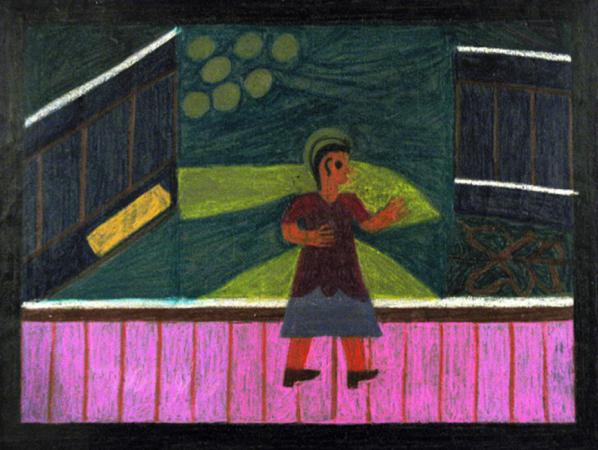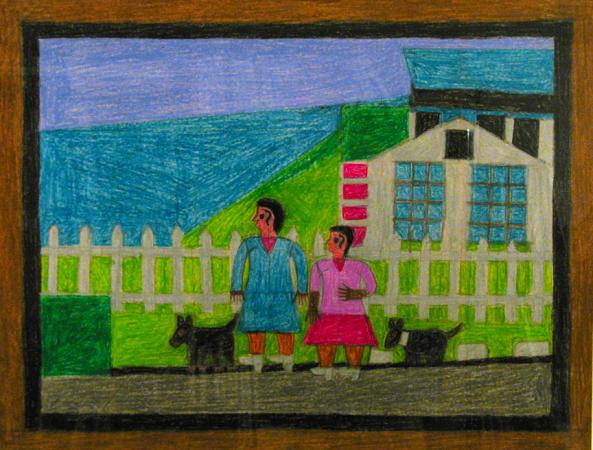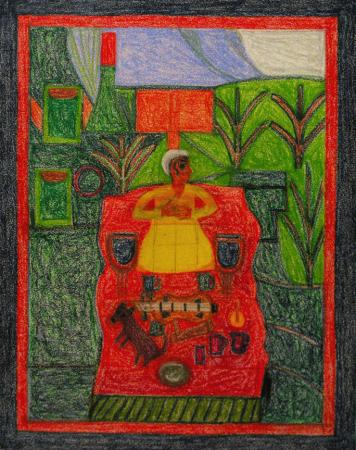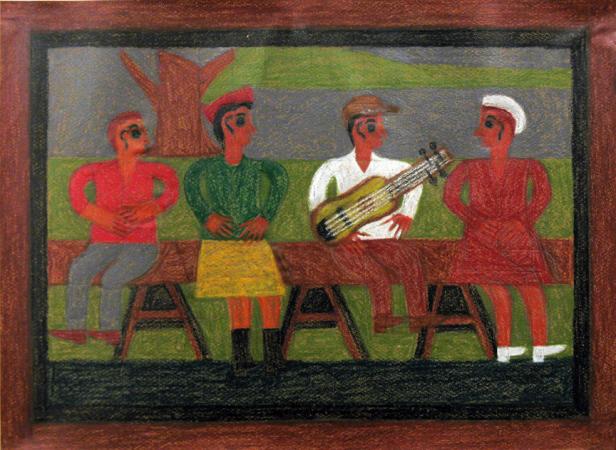Eddie Arning
Eddie Arning
Eddie Arning is a well recognized folk artist and is included in numerous public and important private collections.
Carl Wilhelm Edward Arning, was born in 1898, to a German-speaking Lutheran family, in the farming community of Germania, Texas. He received only six years of schooling and worked on his family’s farm until 1928, when following a series of violent behaviors, including an attack on his mother, led to a year of treatment at Austin State Hospital. He was released briefly only to be committed again in 1934 after displaying symptoms diagnosed as schizophrenia.
Arning began making art in 1964 when Helen Mayfield, a hospital employee who attempted an early form of art therapy, encouraged him to do some drawing. Arning went on to produce more than 2,000 drawings over the next nine years. His early works were in crayon on paper and were primarily still life, animal and landscape subjects drawn from childhood memories of his life on the farm. By 1966, he had incorporated human figures, and in 1969 when he switched to oil pastels his drawings grew denser and more varied in color and texture.
Arning collected magazine advertisements and photos which he used as source materials like many self-taught artist. He began producing more complex compositions often inspired by these advertisements and magazine illustrations. These later works were more graphic images translating the images he viewed into heavily stylized and highly personal arrangements of simplified, abstract shapes and bold planes of color. His style involved a twisting of perspective, flattening the subject, a more personal interpretation of the subject. Thus one could say his style became more mature and individualized. Arning always worked in the same general manner, covering the entire surface of the paper with dense strokes of color.
In 1973, when he was asked to leave the hospital for unspecified bad conduct, he moved to live with a sister and stopped making art. The sale of his work had paid for his hospitalization and achieved for him a certain degree of fame, but despite subsequent stays in various nursing homes, he never again created art. He died in McGregor, Texas in 1993.





